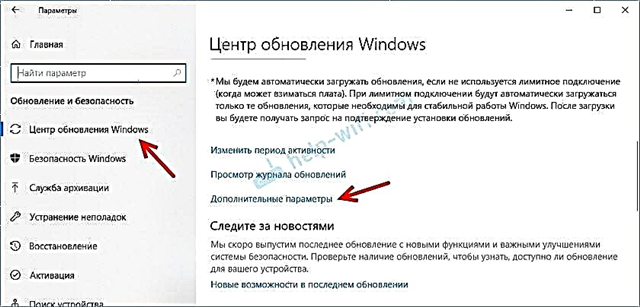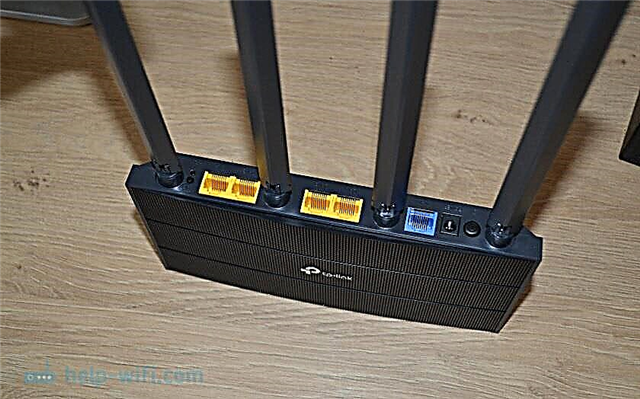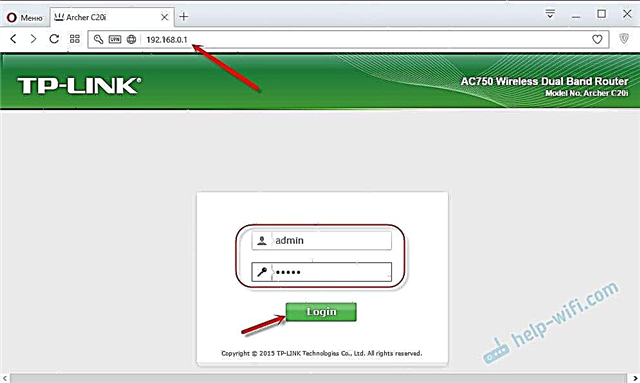Now on sale there are a huge number of different Wi-Fi routers from different manufacturers. And that's good, there is plenty to choose from. But immediately after purchasing a router, we need to install, connect and configure it. And if the connection process practically does not differ depending on the model, then the setup process itself and the page with the router settings may be different even for one manufacturer.
It is very difficult to give detailed and step-by-step instructions for setting up different models within one article. But I'll try. In this article, I will describe in detail and show you how to install and configure a Wi-Fi router. Regardless of what make and model you have. This one-stop guide is suitable for both setting up a new router and reconfiguring. You can do everything yourself. And it is not at all necessary to pay for customization to specialists.
Be sure to visit this page. It contains detailed instructions for setting up popular routers. Perhaps there is a guide for setting up your specific device.
The tuning algorithm is almost always the same. For any router, be it TP-Link, ASUS, D-Link, ZyXEL, Tenda, it doesn't matter. In the same way, it doesn't matter what your Internet provider is: Dom.ru, Beeline, Rostelecom, TTK, Volya, Kyivstar, etc. Everything that depends on the provider is the type of connection. Which you need to select in the settings of the router and set the necessary parameters. I will discuss this in detail below in the article.
It is clear that the settings page itself and the sections differ depending on the manufacturer and model of the router, but the order of configuration will always be something like this:
- Installing and connecting the router. You need to unpack it (if it's new), connect the power adapter to it, choose a place for installation, connect the Internet (cable from the Internet provider) and connect the device from which we will perform the configuration. Wi-Fi or cable. The easiest way, of course, is to connect via cable for setup. From a computer or laptop.
- Entering the router settings. When all the cables are connected, the router is turned on and our device is also connected to it, we need to open the control panel. This can be done by going to the address in the browser, which is indicated at the bottom of the router itself. On the authorization page, you need to specify the factory name and login. They are also indicated on the device itself.
- Internet connection setup. You need to configure your router to connect to your ISP. In the appropriate section (WAN, Internet), you need to select the type of connection that your provider uses and, depending on the type of connection, you need to set the parameters (username, password).
- Setting up a Wi-Fi network. Change the factory name and password of the wireless network.
We already have a connection diagram and settings. Further we will analyze each point in detail.
How to connect a router?
I will describe all the steps step by step. It will be easier for you and me.
1First, you need to choose a place to install the router. Most likely, you will have to install it in the same place where the cable from the provider is laid. You can install it wherever you like and where it works. If you want to be more serious in choosing a place for installation, then you can read the article on where to install a Wi-Fi router in an apartment or house. 2 If the antennas of your model are removable, then screw them on. Plug in the power adapter and plug it into a power outlet. If the indicators on the router do not light up, then check if the power is turned on with the button on the device itself.
The main thing is that the indicators (or one indicator) light up.
3Connection to the Internet router and computer (laptop). If you do not have a PC / laptop, and you will be connected for setup via Wi-Fi, then see the next step.- The cable from the Internet provider (or from the ADSL modem) must be connected to the port, which is signed as "WAN", "Internet", "Internet". It is often highlighted in blue.
- Using the network cable that comes with the kit, connect the router to a computer or laptop (if you have one). On the computer, we connect the cable to the network card, and on the router to the LAN port. It can also be signed as "Home network". Usually there are 4 of them.
Like this:

If you connected to the computer via cable, then you can proceed to the next section, where I will show you how to enter the control panel.
4Only for those with there is no way to connect to the router via cable for settings. In this case, you only connect to the router internet and food.As soon as you turn on the router, it will immediately distribute Wi-Fi. If it is new, has not yet been configured, then the Wi-Fi network will be with the factory name. Also, depending on the model, the network can be protected by a factory password (PIN).
The standard network name and password (PIN) are printed on the body of the router itself (on a sticker). Use this information to connect to a Wi-Fi network from your smartphone, tablet, laptop, etc. Most likely, you will need instructions on how to configure the router from your phone or tablet.
Entering the router settings. How to enter the web interface?
Each router has its own web interface (site with settings, control panel), which can be accessed through a browser by going to the corresponding address.
Important! To enter the router settings and configure it, your device (PC, laptop, smartphone, tablet) must be connected to the router via a cable or Wi-Fi network. At the same time, there may not be access to the Internet on the computer. You don't need internet to enter the control panel!
If you have a high-speed connection on your computer (maybe with the name of your provider), then after connecting through a router you do not need to start it!
On the computer, the adapter properties should be set to automatically obtain IP addresses. Most often it is. How to check, I showed in this article.
To enter the settings, we need find out the address our router and factory username and password for authorization. This information is located on the body of the device itself. It looks something like this:

In almost all cases, the settings can be accessed at 192.168.1.1, or 192.168.0.1... Even regardless of what is indicated on the device case. For more information, see the article: How to find the IP address of the router.
On a computer or mobile device that is connected to the router, open a browser (Opera, Chrome, Yandex Browser, etc.) and go to the address indicated on the case. Or try 192.168.1.1 and 192.168.0.1.
Important! We enter the address into the address bar, not into the search bar. Many people get confused, and instead of a page with settings, they end up on a page with search results of some search engine.

On the authorization page, you need to specify a username and password. Factory specified on the device body. Most often these are admin and admin. On some models, the default settings are not protected, and immediately after entering the control panel, you need to set a username and password.
The authorization page itself, and the settings page, of course, differ depending on the manufacturer and model (firmware). Therefore, it is impossible to consider all the options.
Articles that may be useful to you at this stage:
- 192.168.1.1 or 192.168.0.1 - go to the Wi-Fi router settings
- How to enter the router settings? Open the page with the settings of any router
- Doesn't enter the router settings for 192.168.0.1 or 192.168.1.1
If the settings page has opened, then we can continue. If not, then see the article with solutions to this problem at the link above.
How to set up a Wi-Fi router?
In order to use the Internet through a router, you need at least:
- Set up an internet connection.
- Configure a Wi-Fi network.
In most cases, this is sufficient. I also advise you to change the password that protects the web interface of the router. There are also settings for IPTV, USB drives, parental controls, etc., but not everyone needs them.
In the control panel of almost every router there is a so-called "Quick Setup Wizard", aka "Quick Setup". On some devices, it is open immediately after entering the control panel. With it, you can step by step configure your Wi-Fi router. Internet connection, wireless network, etc. For an example, how it looks from TP-Link:

You can try it, it's very convenient.
Setting up the Internet. The most important step
The main thing is correctly configure the router to connect to the provider... If he cannot connect to the Internet, then all devices will have a connection "Without Internet access". Many users who try to set up everything with their own hands most often encounter problems at this stage.
Each ISP uses a specific type of connection. Dynamic IP (DHCP), Static IP, PPPoE, L2TP, PPTP. This type of connection must be specified in the control panel of the router, and certain parameters must be set that are issued by the Internet provider.
Important! You must know exactly what type of connection your ISP has. Also, all the necessary data for connection (username, password), if necessary. As a rule, this information is indicated in the contract that you received when you connected to the Internet.
Some ISPs bind by MAC address. It is also desirable to clarify this.
If your ISP uses a "Dynamic IP" (DHCP) connection, then the Internet should work immediately after connecting, since this type of connection is set by default on routers.
If the Internet through the router is already working (and you have not started any connections on the computer), then you can skip this section and go straight to setting up Wi-Fi.
When the connection type is PPPoE, L2TP, PPTP, or Static IP (which is very rare), then you need to set the necessary parameters. Usually, this is the login and password that the provider gave you. In the control panel, the section with these settings is most often called: "WAN", "Internet", "Internet".
For example, what the PPPoE connection setting looks like on an ASUS router:

Other examples:
Goal: so that the Internet through the router works on all devices. Via cable and Wi-Fi. If this has not happened, then it is pointless to continue tuning.
You can always call the provider and clarify what parameters and where to specify. They help many by telephone.
Articles that may be useful to you:
- When configuring the router, it says "Without Internet access", or "Limited"
- What type of connection to specify when configuring the router
- Why is the Internet (WAN) indicator on the TP-Link router orange
I hope you succeeded.
Changing Wi-Fi network settings
I highly recommend changing the Wi-Fi network name and password. It is also desirable to set your region. Everything is simple there. This can be done in the section with the wireless network settings. It can be called in different ways: "Wi-Fi", "Wireless network", "Wireless", "Wireless mode". If you have a dual-band router, then the settings must be set separately for the network at 2.4 GHz and 5 GHz.
- In the "Network name" (SSID) field, you need to enter a new name. English letters.
- In the Password (Wireless Key) field, create and write down a password. Minimum 8 characters. Security type - WPA2 - Personal.
- Well, there should be a "Region" field. Change it to yours.
On an ASUS router, this is done like this:

Detailed instructions:
- D-Link: how to put a password on a Wi-Fi network?
- How to change or put Wi-Fi password on TP-Link
- How to set (change) a password on an Asus Wi-Fi router?
- Changing the password of the ZyXEL router
- How can I change the name of the Wi-Fi network (SSID) on the router?
After changing the settings, remember to save them. The Wi-Fi network will have a different name (which you set). Use the set password to connect to it. You may find useful the article on how to connect a laptop to Wi-Fi.
And some more useful information
It is also advisable to change the password that is used to protect the settings of the router. Read about this in the article: how to change the password on a router from admin to another.
Instructions for setting up IPTV: setting up IPTV on TP-Link, and instructions for setting up IPTV on ASUS routers.
If during the setup process something does not work out for you, you can always reset the settings to the factory settings and try to set everything up again. Find the "Reset" or "Reset" button on the case, press it and hold it for about 10 seconds. The indicators will tell you when the reset has occurred.
You can leave questions in the comments. Only I have a small request, describe the problem in detail. Write your router model. And it is very difficult to understand and advise something when you do not understand the question itself. Good luck!











